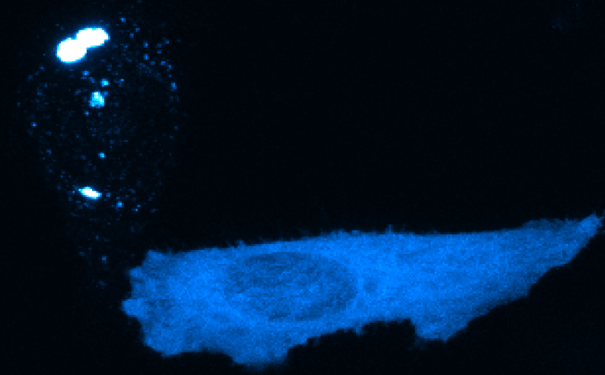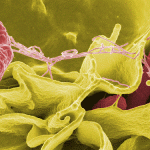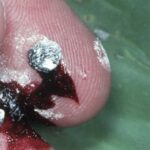
One cell shows the large clusters, while the other cell, which also has mutant Huntington proteins, has not formed visible clusters. Image: Danny Hatters
Scientists can now track proteins that are behaving badly in cases of brain disease.
Diseased proteins behave badly by forming clusters in brain diseases, but it has been difficult to determine where they are located. Researchers from the University of Melbourne and Monash University have developed a technique that can rapidly identify and track the location of diseased proteins inside cells.
The research team developed the technique, published in Nature Methods, using the protein that causes Huntington’s Disease. A specific gene mutation causes the Huntington protein to bend into an abnormal shape, making it sticky so that it forms clusters with other proteins.
“We have understood that diseased proteins form clusters for some time, but we have not been able to track cells at different steps of the clustering process, which is now what we can do with our method,” Dr Danny Hatters, from the University of Melbourne, said.
Hatters and his team examined the proteins using a flow cytometer, which passes thousands of individual cells through a fine tube past a laser and causes the fluorescent-labelled proteins inside to generate a pulse shape. The researchers then deciphered the pulse shape from each cell and determined how the proteins are arranged inside.
“Our method can also be used for other proteins that cluster, such as in Alzheimer’s and motor neuron, but it only works if we know which disease proteins to look for since we need to label them with a fluorescent dye so we can see them,” Hatters said.
The flow cytometer can also separate individual cells for further analysis, so scientists can examine where proteins are located inside cells and determine why they have moved to different locations. “The movement of proteins around different places inside a cell is a key feature of normal cell behaviour and in many diseases, proteins move to a different location or the incorrect location.”
The technique could provide insights into improved treatments for brain diseases, as scientists will also be able test the efficacy of drugs that specifically block the clustering phenomenon by tracking the proteins at different stages.






